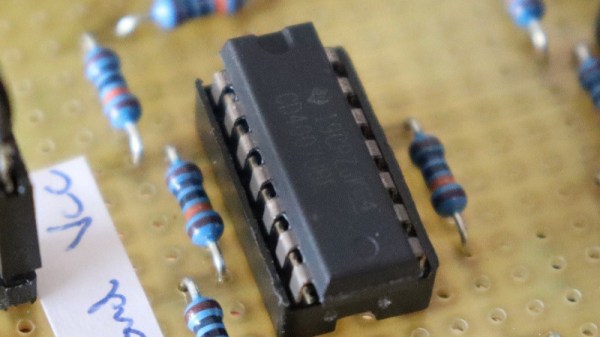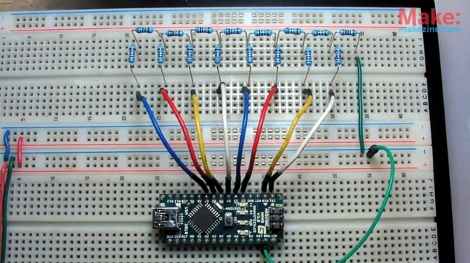With modern microcontrollers, the process of interfacing with the analogue world is easy. Simply enable the on-board DAC or ADC, and talk to the world. If you’ve ever done this with a slightly older microprocessor, you might have encountered the DAC and ADC as chips in their own right, but how about the earliest generation of microprocessors? In those days, if an analogue component was needed, the circuit which would later be integrated on chip would have to be made from scratch. So it is that [Florian Wilhelm Dirnberger] has built a very old-style 6-bit DAC, using a circuit that would have been familiar back in the early 1970s.
At its heart are a pair of 4007 triple CMOS inverters, which form the six bits driving a resistor ladder DAC. This is simply a chair of R… 2R resistors, relying on Ohm’s law for its operation. Each successive bit contributes twice the current to the output of its predecessor, and the 4007 simply provides a buffered supply for the bits.
It’s the simplest of DACs, if not the most capable. Back in the day a typical ADC might also use this circuit, feeding a comparator alongside the input voltage. The microprocessor would count through the digital values until the comparator output bit flipped, at which point it would take the counter value as the analogue measure. You may never need to build one when your microcontroller has one built in, but it’s useful to know how simple DACs and ADCs work.
If the subject interests you, we’ve had a look at DACs including resistor ladders used in audio.














